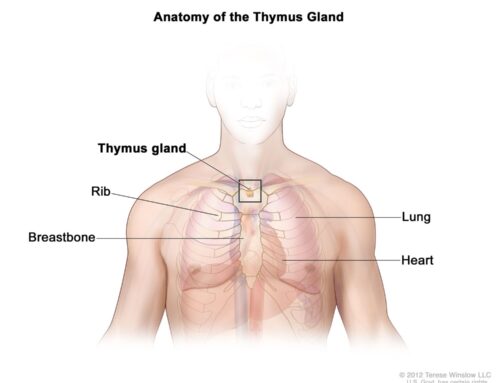pink discharge after period is normal at the start or end of your menstrual cycle. There are several reasons for this, the most common of which is spotting or having periods that last less than two days.
Is this something to be concerned about?
Pink vaginal discharge may occur as part of your period or at other times during your menstrual cycle. It is not necessarily cause for concern.
On its way out of the uterus, blood may mix with clear cervical fluid, turning it pink. This color could also indicate a number of different conditions, such as a hormonal imbalance or infection.
The timing of the discharge, along with any other symptoms you may be experiencing, can aid in determining the underlying cause. Continue reading to find out more.

pink discharge after period
Menstruation begins or ends
Pink discharge is normal at the beginning and end of your menstrual cycle. The blood is just starting to flow or is slowing down at this point. On its way out of the vagina, it may mix with other vaginal secretions, diluting its red color.
Menstrual irregularities are another possibility. Light periods, for example, may last less than two days and be pink, resembling spotting rather than a full flow. Weight fluctuations, age, and stress can all cause irregular menstrual cycles.
Unbalanced hormones
Low estrogen levels can cause pink discharge at any time during your cycle, not just during your period. The hormone estrogen aids in the stabilization of the uterine lining. Without enough of it, the uterine lining may break down and shed irregularly, resulting in multicolored spotting.
Other signs of estrogen deficiency include:
flashes of heat
insomnia
Depression or mood swings
difficulty concentrating
bone deterioration
gaining weight
Infections of the urinary tract
Contraception through hormones
Starting a new hormonal birth control method or changing your current method may result in an artificial estrogen imbalance. As a result, you may experience light pink discharge or spotting. This side effect, also known as breakthrough bleeding, is more likely with estrogen-free contraception.
In some cases, your hormones may adjust to the medication and the spotting will stop within a few months. Others may experience pink discharge for up to three months.
ADVERTISEMENT
Wisp provides rapid bacterial vaginosis treatment.
Wisp’s prescription antibiotics can help you get rid of bacterial vaginosis. Enjoy same-day pharmacy pickup or free home delivery.
Spots of ovulation
Approximately 14 days before your next period, an egg is released from the fallopian tube. Ovulation, or mid-cycle spotting, affects approximately three percent of women. Ovulation spotting may appear pink rather than red because more wet, clear cervical fluid is produced at this time.
Mittelschmerz, or pain in your lower abdomen, is another symptom of ovulation. Women who track their cycles may notice a shift in their basal body temperature.
Your chances of becoming pregnant are greatest in the days preceding and including ovulation.
Cyst of the ovaries
A fluid-filled pocket or sack that develops on one of the ovaries is known as an ovarian cyst. Some cysts are a normal part of the menstrual cycle. A follicular cyst is formed when an egg does not burst from the ovary during ovulation and continues to grow. It may not cause any symptoms and will go away on its own after a few months.
Others, such as dermoid cysts and cystadenomas, can develop into large masses that cause spotting or pink discharge. They can be caused by hormonal imbalances or medical conditions such as endometriosis. You may also experience pelvic pain or heaviness, as well as bloating.
Untreated cysts can rupture or twist the ovary, cutting off its blood supply.
Implantation
The process by which a fertilized egg embeds itself in the uterine lining is known as implantation. It occurs between 10 and 14 days after conception and can result in light bleeding of various colors, including pink. Implantation bleeding does not occur in every woman.
Other early pregnancy symptoms include:
a lot of urination
early morning sickness
breast pain
fatigue
Consider a home pregnancy test if your period is late or you have pink spotting in its place.
Ectopic conception
An embryo may implant in the fallopian tube, according to a rarely trusted source. This is referred to as an ectopic or tubal pregnancy, and it can result in spotting or bleeding. Pink discharge may appear if it is light and mixed with other vaginal secretions.
Other signs and symptoms include:
sharp abdominal, pelvic, neck, or shoulder pain
pelvic pain on one side
dizziness
fainting
thoracic pressure
A ruptured fallopian tube is a potentially fatal complication. Consult a doctor as soon as you notice spotting or bleeding, severe one-sided pain, or any other symptoms.
Miscarriage
Miscarriage occurs in 10 to 20% of pregnancies, usually before the fetus reaches 10 weeks’ gestation. Symptoms include a sudden gush of clear or pink fluid or heavy red bleeding.
Other signs and symptoms include:
lower abdominal pain or cramping
removing vaginal tissue or clots
brown evaporation
dizziness
fainting
Early pregnancy bleeding is normal, but it is critical to report pink discharge or other miscarriage symptoms to a doctor.
Lochia
After childbirth, there is a four to six week period of bleeding. This discharge is known as lochia, and it has a musty, stale odor.
Lochia symptoms include heavy red bleeding and small clots. The bleeding then becomes lighter and turns pink or brown around day four. After day 10, it lightens even more and transitions to a creamy or yellowish color before stopping.
Inform your doctor if you notice large clots or foul-smelling discharge. These could be symptoms of an infection.
PID (pelvic inflammatory disease) or another infection
Pink bleeding can be caused by gonorrhea, chlamydia, and other sexually transmitted infections (STIs). At first, these infections may not cause any symptoms.
When symptoms appear, they may include:
bleeding during sexual activity
Urination is excruciatingly painful.
pelvic discomfort or pressure
Itching in the cervix
between periods spotting
Without treatment, STIs can spread to the reproductive organs, resulting in a condition known as PID. This infection may cause fever as well as other STI symptoms.
PID, if left untreated, can lead to chronic pelvic pain and infertility.
Fibroids in the uterus
A fibroid is a benign tissue growth in or near the uterus. Fibroids are not always accompanied by symptoms.
When they do, abnormal vaginal bleeding is regarded as an early warning sign. Pink cervical fluid may appear as a result of light bleeding or spotting mixed with other cervical fluid.
Other signs and symptoms may include:
pelvic or lower back pain
ache during sex
urinating difficulties or urination pain
Perimenopause
Perimenopause is the time when a woman’s body is preparing to enter menopause, or the cessation of menstrual cycles. During this time, estrogen levels fluctuate erratically. As a result, you may experience pink spotting or irregular periods.
Other signs and symptoms include:
flashes of heat
sleeping difficulties
dry vaginal skin
swings in mood
Perimenopause symptoms usually appear between the ages of 30 and 40.
Is this a symptom of cervical cancer?
Trusted Source pink discharge may be a sign of cervical cancer in rare cases. Invasive cancer symptoms include irregular bleeding after sex, between regular menstrual periods, or after menopause. Early cervical cancer discharge is frequently white, clear, or watery. Any blood that gets mixed in with it may appear pink.
Advanced cancer symptoms include:
slimming down
fatigue
pelvic ache
swelling of the legs
urinating or defecating difficulties
In the early stages of cancer, some women have no symptoms. Maintaining regular Pap tests is critical for early detection and treatment.
How is it handled?
Pink discharge may be a normal part of your menstrual cycle or a temporary side effect of perimenopause or hormonal contraception.
In other cases, the treatment will be determined by the underlying cause. As an example:
Hormone replacement therapy or serotonin-boosting antidepressants are used to treat estrogen imbalances.
Breakthrough bleeding from hormonal contraception should be resolved within a few months. If it doesn’t, you can talk to your doctor about other birth control options.
Ovarian cysts can disappear on their own. If the cyst becomes too large or twists, surgery may be required.
Ectopic pregnancy can be treated with methotrexate and surgical removal of the pregnancy from the fallopian tube. To avoid major internal bleeding, a rupture necessitates immediate surgery.
Miscarriage may resolve spontaneously. If the fetus does not completely clear the uterus, you may require a dilation and curettage (D&C). During this procedure, your doctor will use medication to dilate your cervix while you are sedated. Curettes are used to cut or suction any remaining tissue.
Antibiotics are required for infections such as STIs and PID. Practice safe sex to protect yourself from re-infection during and after treatment.
Uterine fibroids are treated surgically by removing the uterine growths.
Short-term hormonal replacement therapy or antidepressants can be used to treat perimenopausal symptoms. Others may be able to manage their symptoms without the use of medication.
Cervical cancer treatment may include surgery, radiation, and chemotherapy. Some women employ a combination of these therapies.
When should you see a doctor?
Pink discharge isn’t always cause for concern, especially if it occurs near the start of your period.
A normal menstrual cycle lasts 21 to 35 days from the start of one period to the start of the next. The period itself usually lasts two to seven days. Outside of this timeframe, bleeding or spotting that is accompanied by other symptoms such as pain, fever, or dizziness is cause for concern.
Consult a doctor if you experience any bleeding during your pregnancy. Pink discharge is common, especially around the time of implantation or in the early stages of pregnancy. Any discomfort, dizziness, tissue, or clots could indicate an ectopic pregnancy or miscarriage.
Pink discharge after menopause is not normal and should be addressed. Irregular discharge during this period could be a sign of fibroids, cervical cancer, or other serious medical conditions.
pink discharge after period
you may like: First period after c section



Leave A Comment